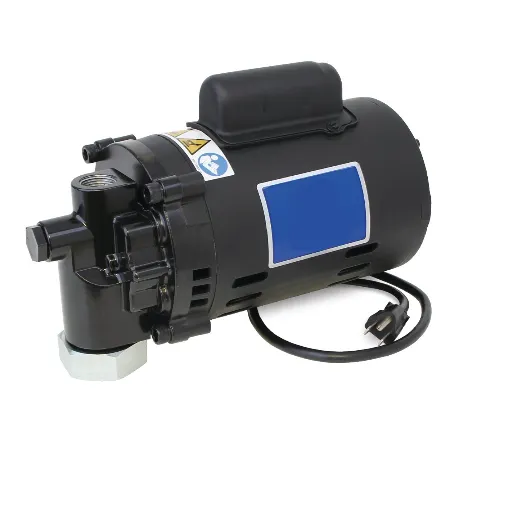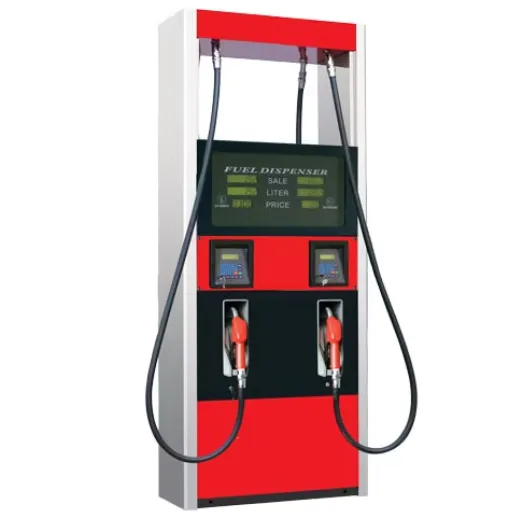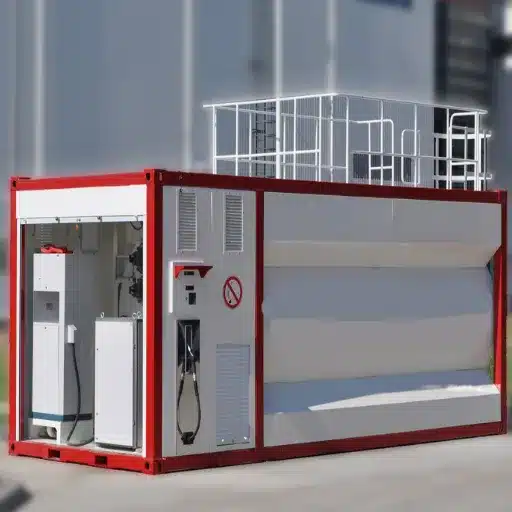Steel storage tanks are great solutions for industries and facilities requiring a dependable, safe storage of liquids, gases, or other materials. These tanks fit our industrial and other sector needs, from oil and chemical storage to water and food-grade applications. Perhaps you were unaware of the different subtypes of metal storage tanks, each custom-built for a particular function. Being familiar with these and knowing what makes them different can help ensure that the correct one is selected for your needs. Thus, this article will delve into the significant types of metal storage tanks, their uses, and the considerations in choosing an appropriate tank for your requirements. This well-rounded explanation will give you the information to make an educated decision and fine-tune your storage solutions, whether your line of business is in construction, manufacturing, or environmental services.
Overview of Metal Storage Tanks
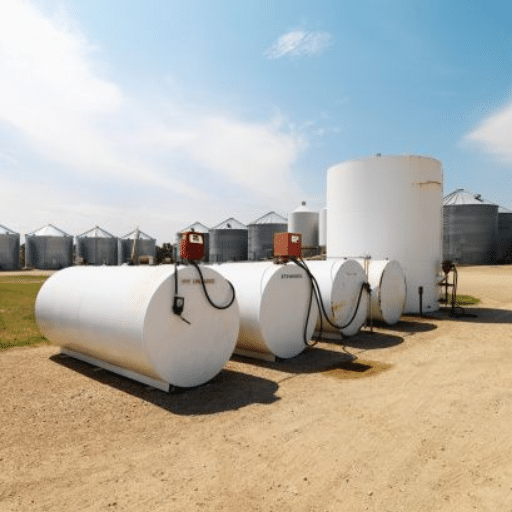
Metal storage tanks provide a container for storing liquids, gases, or other materials in different industries. The commonly preferred materials for their construction are stainless steel, carbon steel, or aluminum, owing to their durability, corrosion resistance, and strength. They exist in different kinds, being above-ground for ease of access and inspection, and underground for minimizing space usage. Typical uses are for storing water, chemicals, fuels, and industrial wastes. Choosing a metal tank for storage would require considering the material’s compatibility with the content, capacity, and safety regulations required.
Definition of Storage Tanks
Storage tanks are vessels specifically meant to store liquids, compressed gases, or other materials that find usage in industries, commercial spheres, or otherwise, in residential settings. These tanks are vital for all kinds of work in agriculture, manufacturing, energy, water treatment, etc. They come in multiple designs, sizes, and materials depending on their uses. Modern storage tanks are manufactured from stainless steel, carbon steel, polyethylene, and fiberglass-reinforced plastic (FRP) to ensure durability and safety.
Globally, the demand for storage tanks has increased significantly with rising industrialization and urbanization from the perspective of industry data. In contrast, the oil storage market globally is forecasted to cross $17.22 billion by 2027 with a CAGR of 4.2% between 2020 and 2027.
They are roughly divided into vertical tanks, horizontal tanks, fixed-roof tanks, floating-roof tanks, and spherical tanks. Each type caters to a different industry need; for example, floating-roof tanks reduce evaporation losses when storing volatile liquids such as petroleum, while underground tanks are typically used for storing fuel to save space and shield it from environmental exposure. Maintenance and inspection ensure longevity, and the latest advances in monitoring technology help detect leaks and corrosion in real time.
Managing storage tanks now also emphasizes responsible use and adherence to environmental and safety standards. Regulatory agencies such as the EPA (Environmental Protection Agency) in the U.S. impose rigorous conditions regarding the setting up and operation of tanks, especially for those storing hazardous substances. These rules go a long way toward reducing the risk of chemical spills or groundwater contamination.
Importance of Storage Tanks in Industry
Storage tanks are involved in nearly every industry as a safe and efficient solution for the upkeep or containment of all kinds of liquids, gases, and other materials. They are widely used in oil and gas, chemicals, agriculture, water treatment, and food production. For example, in the oil and gas industries, storage tanks are vital for holding crude oil, refined products, and intermediate chemicals to ensure a continuous supply and to prevent operational downtime.
According to recent data, the value of the global storage tank market is anticipated to rise significantly during the forecast period, fueled by a massive demand for energy and chemical products. Also, growth is further supported by modern-day tank materials and manufacturing technologies, incorporating corrosion-resistant alloys and environment-friendly coatings to improve tank durability and reduce overall maintenance costs or capacity to serve. Alongside these advancements, intelligent monitoring systems have also been incorporated into modern storage tanks, whereby operators can detect temperature, pressure, and temperature levels in real-time through IoT-based technologies.
It is also crucial for the environment to consider advanced storage tank design. Secondary containment systems and remediation controls make cleanups safe and minimize risks associated with volumetric loss due to leaks and mass emissions, thereby ensuring environmental standards and protecting surrounding ecosystems. Storage tanks are essential in modern industrial applications, from operational efficiency to sustainable applications.
Materials Used in Storage Tanks
Storage tanks are made from various materials, each chosen according to the application requirements, such as the substance to be stored, the environment to which it is exposed, and convenience over time. Common materials include:
Carbon Steel: The widely accepted material due to strength, amenities, and load-bearing ability. Carbon steel tanks are generally employed to store mostly non-corrosive substances, such as water, fuels, and oils.
Stainless Steel: This metal is corrosion-resistant and ideal for holding chemicals, acids, or food-grade products. It is also durable, easy to clean, and workable in hot and cold environments.
Fiberglass-Reinforced Plastic (FRP): These tanks are lightweight and corrosion-resistant; however, they are usually assigned to hold highly corrosive substances, such as wastewater and strong chemicals.
Polyethylene Plastic: These tanks are usually small to medium and provide chemical resistance. They require a low-cost investment and are used mainly at residential and agricultural scales.
Concrete tanks are suitable for storing water or wastewater in large volumes. Sturdy and durable, but if not maintained properly, they may develop cracks and seepage as they age.
Every material is chosen for various reasons, including safety, efficiency, and compliance with required operational and environmental standards. Different considerations are involved in selecting a material for a particular storage application, including the chemical nature of the substance, the temperature range it will be kept at, and the pressure requirements.
Types of Metal Storage Tanks

A metal storage tank is an adaptable technology for storing liquids and gases in various industries. The main types of metal storage tanks are:
Stainless Steel Tanks: These tanks are corrosion-resistant and can store chemicals, food products, and beverages; hence, they are highly durable and hygienically apt for environments.
Carbon Steel Tanks: Carbon steel tanks commonly store petroleum products and water. They are less expensive than stainless steel tanks and require coatings to prevent corrosion.
Aluminum Tanks: Lightweight and corrosion-resistant, aluminum tanks are best suited for portable storage or transporting certain liquids.
Alloy Tanks: These are tanks made for handling aggressive chemicals, offering better durability and performance required for severe industrial operations.
The choice of any given metal tank depends on the exact requirements of the material for storage, compatibility, durability, and industrial working standards.
Steel Tanks
Steel tanks are known for their strength, durability, and versatility; hence, they find utility in almost every industry. The word “steel tanks” is often used when high-quality materials such as carbon or stainless steel are involved. Such tanks are designed to resist extreme conditions, be that high pressure or very low temperature or vice versa.
A stainless steel tank can resist corrosion in places where the water storage is to remain potable or coz two beverages or chemicals require a non-reactive storage. In some cases, these tanks are also lined with linings, making them even more corrosion-resistant and wear and tear-resistant. Depending on the industry, it is said that a steel tank could last 30-50 years or even longer with good maintenance, which implies its ability to be cost-effective over a period. They are widely used in the oil and gas, agriculture, water treatment, and food processing industries. Its capacity ranges from small 500-gallon tanks for local storage to huge systems that bear several million gallons of storage for use in industry.
New-age steel tanks are also equipped with features, including insulation, heating jackets, and mixing systems, designed around a specific application. The ability to fabricate steel tanks custom equips them to meet any operational requirement, fitting into a wide range of operational needs.
Stainless Steel Tanks
Stainless steel tanks are prized for their durability, resistance to corrosion, and ability to serve a wide range of industries, including food processing, pharmaceuticals, and chemical manufacturing. When made with high-grade stainless steel, such as 304 or 316, these tanks are robust and long-lived even when exposed to rugged environments.
One significant advantage of stainless steel tanks is their high-level rust and chemical attack resistance, making them ideal for objects that demand storage of reactive substances, acids, or alkalis. For instance, type 316 steel provides a better resistance to chloride-induced corrosion, a prerequisite in marine or saltwater-related industries. Furthermore, stainless steel tanks fulfill strict hygienic conditions as they are non-porous and easy to clean, making them indispensable in storing and processing consumable goods such as dairy, wine, and oils.
They can also have sophisticated features like CIP (Clean-In-Place) systems, automatic mixing mechanisms, temperature control units, and thermal insulation. Large, commercial-grade tanks may have volumes exceeding 20 million liters, while small, portable tanks may hold just a few liters, underscoring the company’s adaptability to ever-changing needs.
From an environmental perspective, stainless steel tanks are a more favorable alternative due to their recyclability. Stainless steel can be recycled and reused without any deterioration in quality, fostering sustainability efforts worldwide. Their high initial cost is compensated by considerable savings in maintenance costs and being functional for a longer time, making stainless steel tanks a reliable and cost-effective storage and processing solution in contemporary times.
Carbon Steel Tanks
Industry reports state that carbon steel tanks with proper maintenance can last for decades, especially in non-corrosive environments. These tanks might need more frequent maintenance than their stainless steel counterparts. However, their comparatively lower installation costs and ability to be fabricated in large sizes make these tanks ideal for big industrial-scale operations. The carbon steel tanks remain a reliable storage solution for heavy storage applications.
Water and Liquid Storage Tanks

Water storage tanks and containers are necessary for storing and safely managing all kinds of liquids used in industrial, commercial, or residential settings. Depending on the nature of the liquid to be stored, environmental factors, and price considerations, these tanks are erected from stainless steel, carbon steel, or polyethylene. Good maintenance and periodic inspection of the system, storage tanks, or containers is highly required to keep the system for a long and safe life.
Water Storage Tanks
Water storage tanks are crucial wherever water may not be consistently available from a well-delivered source or where ample stockpiling of large volumes of water occurs. Tank applications are often residential, agricultural, commercial, or industrial. There are a variety of tanks, including above-ground, underground, and collapsible storage tanks, each suited for different purposes.
A modern water storage system would have a UV coating applied to it to counter the effects of sunlight, be made of corrosion-resistant materials for durability, and be modular in design to fit an application where capacity can be increased. Polyethylene tanks are generally preferred as they are lightweight but durable and resist rust and corrosion. Though hefty on the pocket, stainless steel tanks are most stable and suitable for potable water storage because they are hygienic.
Studies have found that in the United States, using storage tanks along with rainwater harvesting systems can save more than 10,000 gallons of water per household per year. Agriculture uses water storage tanks extensively to supply water under irrigation during the year for places that face seasonal droughts.
Sizing is paramount when choosing a water storage tank because the capacity of tanks ranges from a smaller domestic type of around fifty gallons to heavy industrial-sized tanks of fifty thousand gallons and above. Also, regular cleaning and maintenance ensure the tank is not contaminated, prolonging its use. In recent times, given water conservation, more and more storage tanks have become an integral part of sustainable resource management.
Hot Water Storage Tanks
Hot water storage tanks are a crucial component of any modern heating system that allows for efficient heating, storage, and delivery of hot water for residential, commercial, and industrial use. These tanks keep water heated to a certain temperature so that it may be reliably supplied to showers, heating systems, or any other need. Most hot water tanks have insulation to reduce heat loss, maximize energy efficiency, and reduce utility costs.
Storage tanks are usually divided into two classes: direct and indirect types. Indirect tanks are plugged into the boiler or heat pump, which heats the water circulated via a coil inside the tank. The capacities of these tanks vary from small 30—to 100-gallon types for homes to those capable of storing thousands of gallons in industrial setups. Direct hot water storage tanks have a built-in heat source, an electric heating element, or a gas burner.
The new era of enhancements to hot water storage includes smart controls and energy-efficient materials. For example, sensor and Wi-Fi-enabled systems allow users to monitor and control water usage remotely and, hence, conserve energy. These work in tandem with the advanced construction materials of today, including hot water storage tanks insulated with top-quality polyurethane foam insulation that reduces heat loss by 50%.
The merging of renewables like solar thermal systems further improves the working of hot water storage tanks. Solar-compatible tanks perfectly complement and utilize solar panels for heating water, drastically reducing energy costs and carbon footprint. These systems are beneficial in high solar radiation areas, wherein studies have shown solar thermal systems providing up to 60-70% of a household’s annual water heating requirements.
Periodic maintenance is vital for guaranteeing the performance of any hot water storage tank. It involves flushing out the tanks to remove sediment buildup and checking the anode rod for corrosion. With appropriate maintenance, the lifespan of a hot water storage tank can be extended to 10-15 years.
Industrial Chemical Storage Tanks
Treating industrial chemical storage tanks is critical to safely storing chemicals used by industries such as manufacturing, agriculture, pharma, and energy production. The storage tanks are made of stainless steel, polyethylene, or fiberglass-reinforced plastic, whose material properties allow corrosion resistance and are compatible with the chemicals they contain.
For safety and efficient storage, the design will meet or exceed EPA standards and certifications such as UL for hazardous material safety. A requisite concerning these tanks is their resistance to extreme temperatures, atmospheric pressure, and chemical changes. Polyethylene chemical tanks, for example, are widely used for highly corrosive substances such as sodium hypochlorite and sulfuric acid because of their high chemical resistance and good durability, which can last for more than 20 years with proper maintenance.
Monitoring technologies such as ultrasonic level sensors have recently been added to tanks, supporting real-time inventory control and leak detection. This is a considerable topic, especially when reports mention that even tiny spills could cause adverse environmental effects and financial losses. Studies have shown that advanced tank monitoring minimized operational risks by 40% or more.
Efficient maintenance concerning these storage tanks’ corrosion, cracking, or structural instability is necessary for their extended working life. Non-compliance with scheduled maintenance programs is ranked as the leading cause of failure of industrial tanks, thus necessitating the enforcement of regulations.
Oil and Fuel Storage Tanks
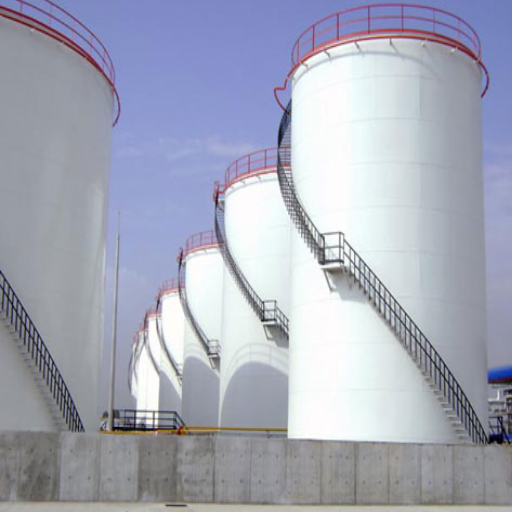
Oil and diesel storage tanks are crucial, where petroleum products are stored securely and safely. These storage tanks ensure fuel is available for industrial, commercial, and emergency uses. Inspection and maintenance standards should be followed occasionally for safety and functionality. When maintained properly, these tanks reduce the chance of environmental hazards like leakage or spill, thus contributing to overall safety and operating efficiency. Adhering to the regulations and introducing monitoring systems ensures storage is even better.
Industrial Oil Storage Tanks
This particular tank is gorgeous and rusty at the same time. They are fine, and industrial oil storage tanks are equally important when they provide fuel for industrial, commercial, or even emergency operations. Proper inspection and maintenance, along with compliance with specific standards and monitoring systems, will always guarantee the safety and reliability of the tank to the standards and will further reduce environmental issues such as leakage or spills.
Industrial Fuel Storage Tanks
Industrial fuel storage tanks store fuel in large quantities needed across the industry’s transport, manufacturing, and emergency power generation sectors. These tanks are designed to hold different kinds of fuel, such as diesel, gasoline, and jet, with safe storage derived from the demand of a constant supply. They range in capacity from just a few thousand gallons to millions of gallons, serving the needs of various industries, big or small.
Advanced technologies have improved fuel storage systems, using high-grade materials such as steel and fiberglass-reinforced plastics, maximizing durability, and ensuring corrosion resistance. Secondary containment systems are also installed because this system prevents leaks or spills from the storage tanks from causing damage to the environment. Data within the industry show that double-walled tanks and bunding systems drastically lessen the risk of groundwater contamination, an attribute considered paramount from the perspective of environmental compliance.
Fuel storage tank regulations issued by agencies such as the U.S. Environmental Protection Agency require regular inspections, spill prevention methods, and consistent maintenance. In modern installations, these systems have monitors and sensors that can detect early indications of fuel leakage or tank degradation. Stats show that when facilities adopt digital monitoring systems, they cut down the chances of fuel loss by 25%, proving their value in ensuring operational efficiency over time. Proper storage of fuels in line with legal requirements and newer forms of technology means that today, industrial fuel storage tanks stand as a sure means to meet energy demands with lesser environmental risks.
Oil Storage Tanks
The majority of industries and operators require storage for their oil. Depending on the need in question, there are commonly different types of storage tanks: fixed roof, floating roof, or underground. Repairs and continuous inspections are necessary to prevent issues with dangerous leaks, corrosion, and structural failures. More sophisticated, digital monitoring systems now exist to assist operators in keeping track of inventory levels or detecting potential problems in real time. Adherence to safety codes from API 653 and compliance with environmental aspects ensures that a storage operation is least hazardous to humans and the environment.
Advanced technology, such as automated leak detection systems and double-walled tanks, provides added safety and reduces the chances of spills or contamination. Properly designed and maintained tanks increase operational efficiency and promote sustainability by decreasing environmental impact when integrated with modern technology. These inventions empower industries to cater to energy needs responsibly and safely.
Specialty Storage Tanks
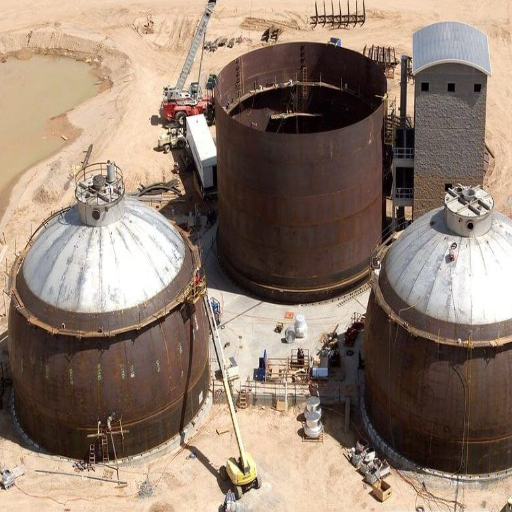
Specialty tanks store materials that require special handling conditions, like chemicals, hazardous materials, or temperature-sensitive substances. They are fitted with corrosion-resistant materials, special linings, and thermal insulation to ensure complete safety when storing materials. The design either complies with operational standards and safety regulations or is prepared with them, rendering them essential in the chemical, pharmaceutical, and agricultural industries.
Industrial Gas Storage Tanks
Industrial gas storage tanks are critical for storing and handling compressed, liquefied, and cryogenic gases for various industries. Under strict industry rules and safety measures, the tanks are designed to hold dangerous gases such as oxygen, nitrogen, hydrogen, carbon dioxide, and natural gas.
Gas storage tanks can be classified as pressure vessels, cryogenic tanks, aboveground, or underground storage systems according to their use. Cryogenic tanks store gases at extremely low temperatures to keep them liquid. These tanks are often made of high-grade stainless steel, complete with insulation systems minimizing heat ingress.
The dimensions and capacity of industrial gas tanks vary greatly, from 1,000 gallons for smaller vessels to more than 1 million gallons for large storage tanks. For instance, the global demand for liquefied natural gas (LNG), which needs special storage tanks, introduced new tank technologies, including designs enabling long-term storage without excessive boil-off.
Safety features such as pressure relief valves, monitoring systems, and secondary containment are installed in these storage tanks to forestall accidents and provide operational reliability. Industry data forecast significant growth in the global industrial gas storage tank market due to increased energy demands and gas use in healthcare, manufacturing, and energy production sectors.
Applications of Different Types of Industrial Storage Tanks
Industrial storage tanks are critical for the safe and efficient storage of anything from liquids to gases for various industries. The following are some key application areas of different types of storage tanks as gathered from recent industrial developments:
Chemical Storage Tanks: Depending on the manipulation level, chemical storage tanks are generally required to store various hazardous and non-hazardous materials. Hindustan Orgochem Ltd., for example, may use a chemical storage tank to manufacture and dispose of chemicals in its pharmaceutical applications and water treatment plants. The increasing demand for polymers in the construction and automotive sectors drives the chemical storage tank market worldwide.
Fuel and Crude Oil Storage Tanks: Local storage of oil, diesel, gasoline, and crude oil is primarily the work of these tanks in refineries, gas stations, and so on. This enables meeting the increasing demand for energy and ensuring smooth operations, especially for transport and energy generation. With the growing demand for energy all around the globe, the market has expanded and is forecast to grow at a CAGR of approximately 4-5% in the coming years.
LNG and LPG Storage Tanks: These tanks are designed to keep the gases at cryogenic temperatures. LNG storage is vital for power generation and marine shipping industries for energy distribution, whereas LPG tanks are primarily used for domestic and commercial heating applications. The growing adoption of cleaner energy sources has led to an increase in demand for these storage facilities.
Water and Fire Protection Tanks: These tanks are commonly used to store water in municipal pipelines, agriculture, and industry. However, Fire protection tanks are used in buildings and industrial plants to supply water during emergencies. Around the world, increased demand for these tanks is due to government regulations and standards for fire safety.
Industrial Gas Storage Tanks: These tanks store gases such as oxygen, nitrogen, and helium and are very important in the medical, welding, food processing, and aerospace industries. The medical sector, in particular, has been a key driver, with increased demands for medical-grade oxygen in hospitals arising out of recent global health crises.
Wastewater Storage Tanks: Wastewater tanks store and treat industrial waste before disposal or reuse. Various industries, such as manufacturing, mining, and food production, require such tanks to follow environmental regulations that lessen their environmental impact.
With increasing industrialization, urbanization, and complete goodwill for sustainability, industrial storage tanks are predicted to maintain steady growth. Integrating advanced materials such as stainless steel, fiberglass, and polyethylene further strengthens these solutions’ endurance and efficiency characteristics, answering various industry challenges.
Regulations and Standards for Storage Tanks
The regulations and standards about storage tanks have been devised to guard safety, give a protective atmosphere, and ensure that the industry follows the best available practices. API 650 is probably one of the most famous standards developed by the American Petroleum Institute, and this sets forth requirements for the design, fabrication, and inspection of welded storage tanks for the oil, gas, and chemical industries. When hazardous substances are held, the EPA ensures that compliance with the Resource Conservation and Recovery Act (RCRA) is enforced to prevent the substances from leaking into the atmosphere.
OSHA regulations also require safety in storage tank operation, such as maintenance and inspection. An equally important standard is UL 142, which concerns the construction and performance of above-ground steel storage tanks, especially for flammable and combustible liquids.
EPA’s 40 CFR Part 280 must comply with the requirements regarding underground storage tanks (USTs). The regulation prescribes corrosion protection, spill prevention, and regular monitoring, for instance, to reduce the chances of contamination of soils and groundwater. At the international level, ISO 16961 specifies the design and operation of above-ground storage tanks to enhance uniformity and safe operation across global markets.
Recent interests suggest increasing the focus toward sustainable practices, such as double-wall tanks, to reduce the possibility of leakages and application of corrosion-resistant materials of the highest order. Industries joining with these regulations and standards can ensure operational efficiency while working for the environment and employee safety.
Reference Sources
“Methane and Hydrogen Storage in Metal Organic Frameworks: A Mini Review” (2020)
“Hydrogen Energy Storage and Its Applications” (2023)
“Measurement of Operating Parameters of a Hydrogen Compressor Using Metal Hydride Materials” (2023)
Frequently Asked Questions (FAQs)
1. What are the common types of metal storage tanks?
Metal storage tanks can generally be categorized into several types: fixed-roof, floating-roof, spherical, and horizontal cylindrical. Each type is designed for specific storage needs and operational requirements.
2. What materials are used to construct metal storage tanks?
Metal storage tanks are typically constructed using carbon steel, stainless steel, or aluminum. The choice of material depends on the stored substance, environmental conditions, and durability requirements.
3. What industries commonly use metal storage tanks?
Industries like oil and gas, manufacturing, chemical processing, agriculture, and water treatment commonly use metal storage tanks to store liquids, gases, or other substances crucial to their operations.
4. How do floating-roof tanks differ from fixed-roof tanks?
Floating-roof tanks feature a roof that moves along with the level of the stored liquid to reduce vapor emissions. In contrast, fixed-roof tanks have a stationary roof and are primarily used for liquids with lower volatility.
5. What factors should be considered when selecting a metal storage tank?
Key factors include the type of substance to be stored, storage capacity, environmental conditions, regulatory compliance, and the tank’s resistance to corrosion or structural wear.


